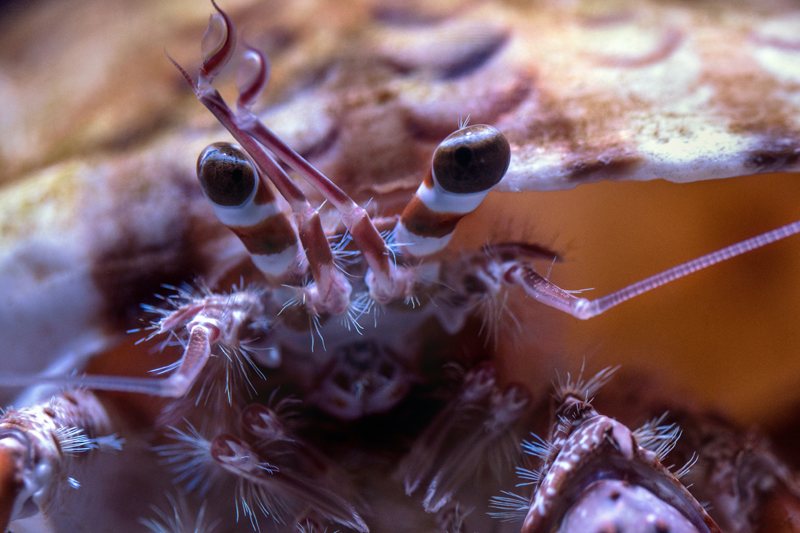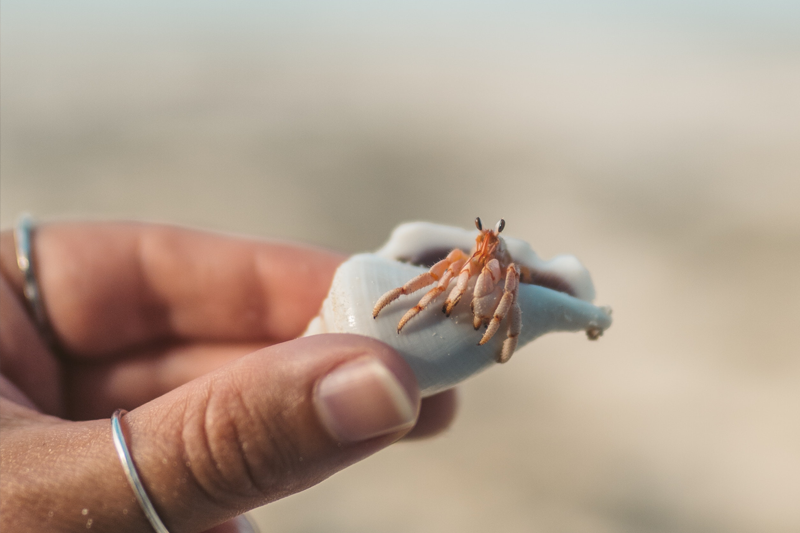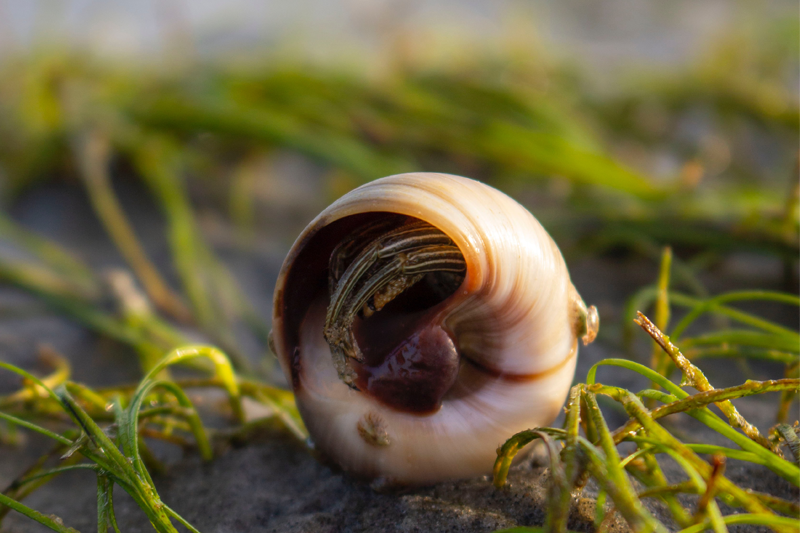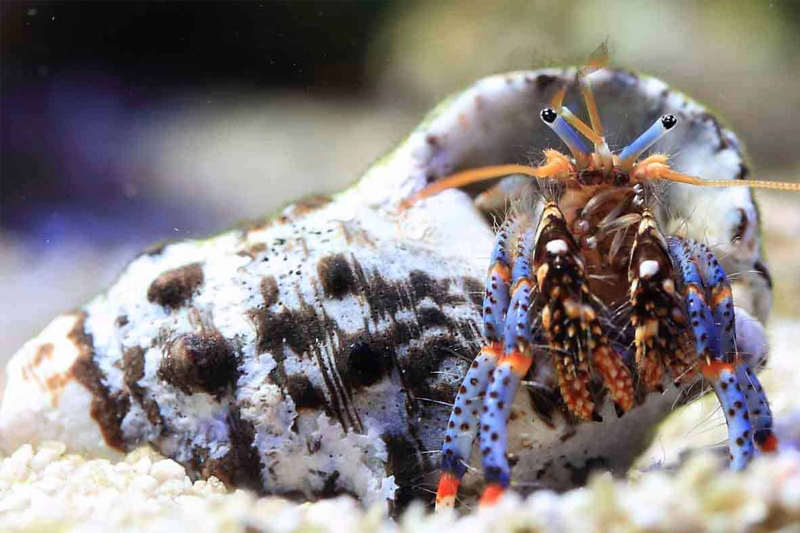If it’s your first time taking care of hermit crabs, it’s important to note that they come in several species, each with its unique and interesting characteristics, habitat preferences, and behaviors.
Here are the common and popular types of hermit crabs in hermit crab owners:
1. Purple Pincher (Coenobita clypeatus): Also known as the Caribbean hermit crab, this species is one of the most commonly kept in the pet trade, found in the Caribbean and Gulf of Mexico.
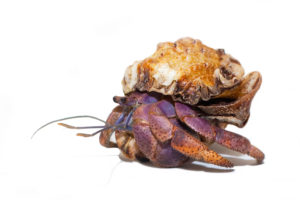
Photo credit: johnhutchingsmuseum.org
2. Ecuadorian (Coenobita compressus): Native to Ecuador, these hermit crabs have distinctive red or orange antennae. They are often chosen as pets due to their smaller size compared to Purple Pinchers.

Photo credit: aquariumbreeder.com
3. Ruggie Hermit Crab (Coenobita rugosus): Found in the Indo-Pacific, these hermit crabs have rugose or bumpy exoskeletons, providing them with a unique appearance.
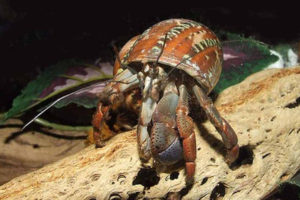
Photo credit: aquariumbreeder.com
4. Blue-Legged Hermit Crab (Coenobita purpureus): Native to the Indo-Pacific, these hermit crabs have distinctive blue legs and are known for their striking coloration.

Photo credit: aquariumbreeder.com
5. Australian Land Hermit Crab (Coenobita variabilis): These hermit crabs are found in northern Australia and have a unique appearance with a mix of colors and patterns on their exoskeleton.

Photo credit: vanessapikerussell.com
6. Indo-Pacific White-Clawed Hermit Crab (Clibanarius virescens): Recognized by their greenish claws, these hermit crabs inhabit the Indo-Pacific region.

Photo credit: reeflifesurvey.com
7. Dwarf Zebra Hermit Crab (Clibanarius signatus): Native to the Caribbean, these hermit crabs are small and have distinctive zebra-striped legs.

Photo credit: projectnoah.org
8. Blue-Eyed Hermit Crab (Clibanarius tricolor): These hermit crabs have bright blue eyes and are found in the Indo-Pacific region.

Photo credit: aquariumbreeder.com
9. Stareye Hermit Crab (Dardanus venosus): Native to the Caribbean, these hermit crabs have a crown-like appearance on their shells and are often seen with anemones.
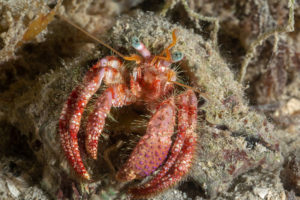
Photo credit: scuba.spanglers.com
Understanding that different hermit crab species have specific care requirements is crucial. When keeping them as pets, researching and comprehending the particular needs of your species is vital to ensure their well-being in captivity. Responsible pet ownership also involves ethical sourcing practices to support the conservation of wild hermit crab populations.
